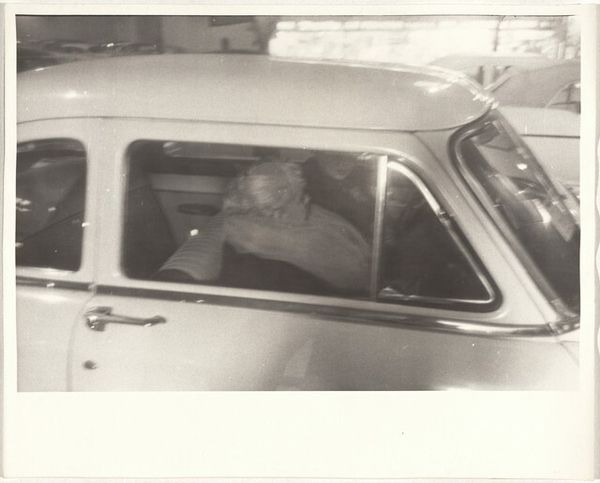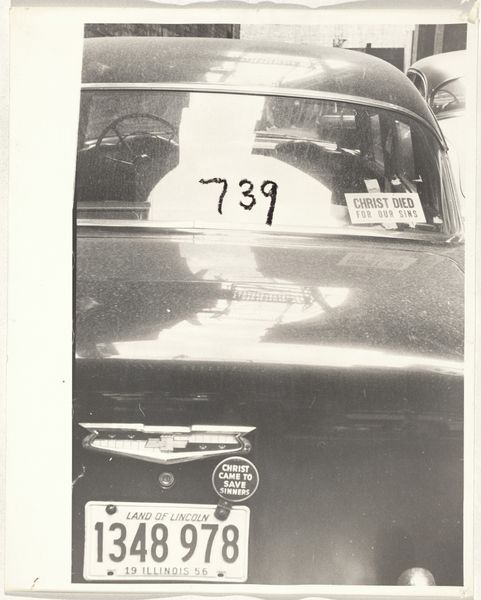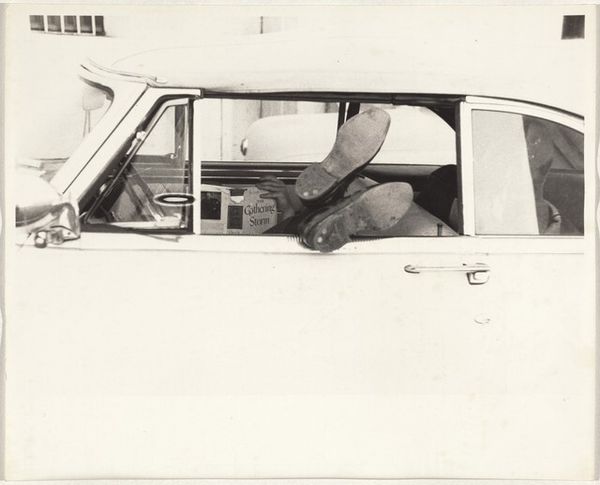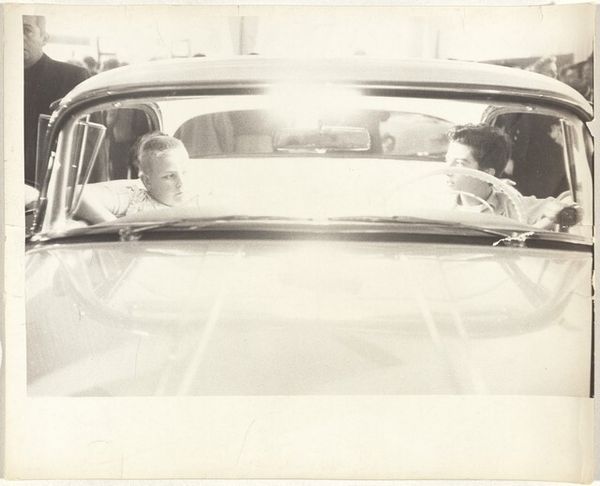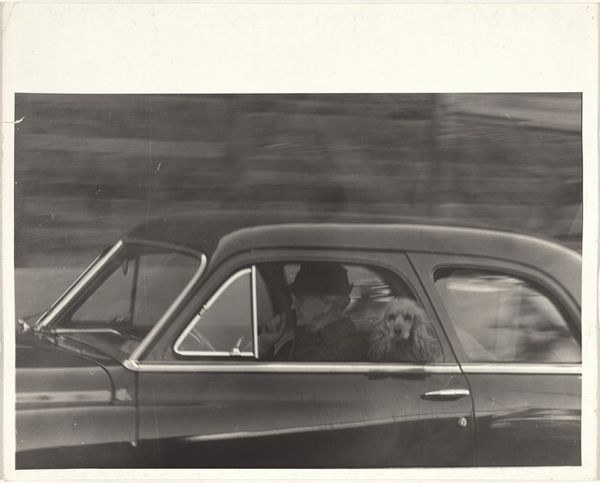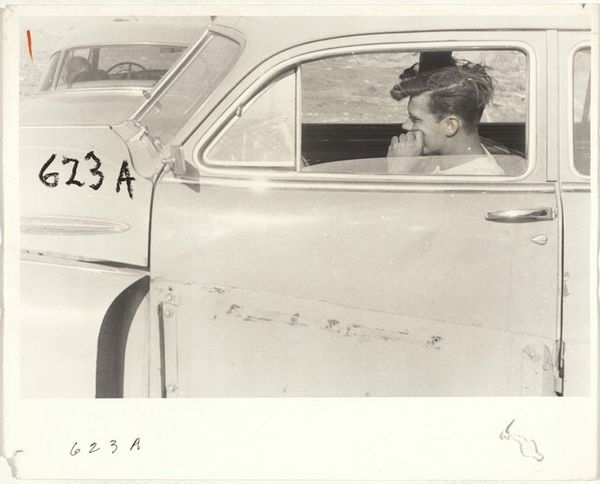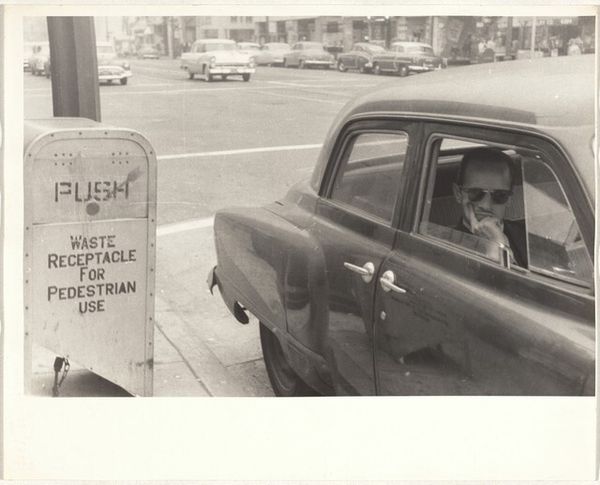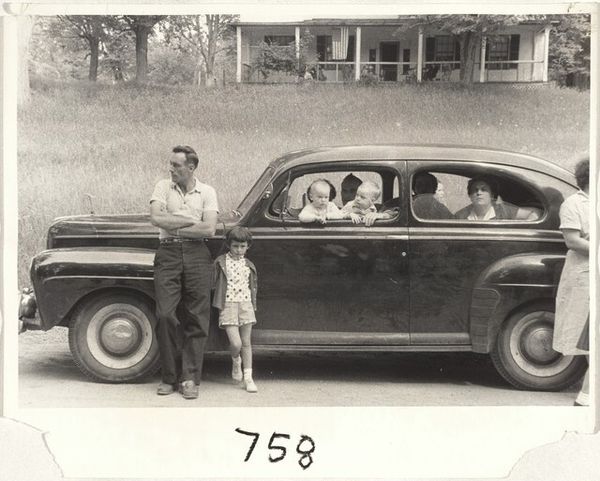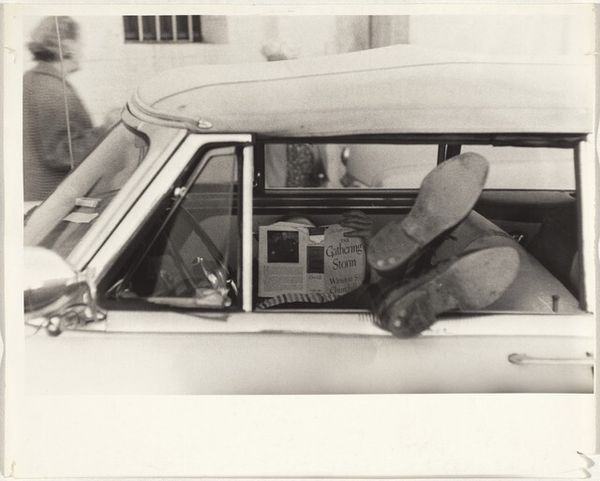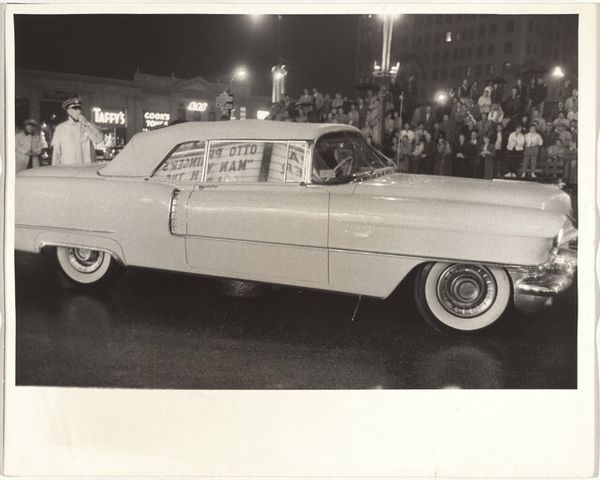
print, photography, gelatin-silver-print
#
print photography
# print
#
landscape
#
street-photography
#
photography
#
gelatin-silver-print
#
pop-art
Dimensions: sheet: 20.2 x 25.2 cm (7 15/16 x 9 15/16 in.)
Copyright: National Gallery of Art: CC0 1.0
Curator: Robert Frank's "Automobile at night--Los Angeles", taken between 1955 and 1956. It's a gelatin silver print. What's your take? Editor: Moody. There’s a kind of graininess that swallows light and blurs definition—particularly in the street details and reflections. The tonality emphasizes shadows, hinting at urban anxiety, perhaps? Curator: Absolutely. Frank’s work during this period, especially "The Americans," was very conscious of representing a disaffected America, contrasting with the post-war economic boom narrative. The passengers, possibly a family, seem detached within the car, maybe a metaphor for isolation even within a supposed collective. Editor: The composition is strikingly direct. We see this automobile and the faint figures inside, yet the background city almost melts away. I notice the stark contrast between the immediate presence of the car, dominating almost the whole shot, and the blurry reflection of signs on the street. It almost reduces the modern landscape to abstract light and text. Curator: His approach challenged the idealized imagery often promoted at the time, revealing social unease and disillusionment among ordinary citizens. The positioning of the subjects within the car also speaks volumes, suggesting detachment from their surroundings and perhaps from each other. Editor: Looking at the arrangement, the strong horizontal line of the car itself against the vertical elements in the background creates tension. I mean, this isn't a postcard image—Frank chooses to complicate the visual field. The soft focus softens reality but does so selectively and deliberately, pushing us, as viewers, to interpret these spatial dynamics. Curator: Exactly, that tension echoes the broader cultural and political anxieties bubbling beneath the surface of 1950s America. He captured not just the image, but a sentiment that ran counter to mainstream portrayals of the "American Dream." Editor: In short, while seemingly simple, Frank’s choice of lighting and focus are potent artistic gestures to convey that mood effectively. This seemingly unposed quality evokes deep psychological realities about post-war American culture. Curator: Indeed. It serves as a crucial document, capturing a raw and honest vision of American life during a period of supposed prosperity and harmony. Editor: A fascinating deconstruction that highlights not just what’s there but the complex undercurrents it represents through simple aesthetics.
Comments
No comments
Be the first to comment and join the conversation on the ultimate creative platform.

